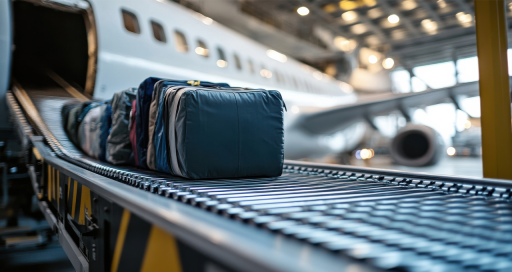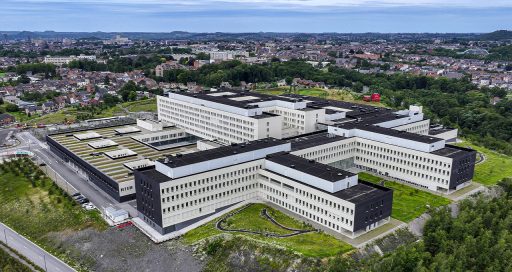Luxembourg Airport undertook a complete overhaul of its baggage-handling system to meet new European security regulations. Cegelec IMCS was on hand to manage this complex and critical operation.

Airport security is key concern, with a particular focus on preventing terrorist attacks. To strengthen this is the aim of the 2020 European regulation requiring all EDS (explosive detection systems) and scanners in airports processing more than 200,000 passengers a year to be upgraded to the latest Standard 3 technology.
This regulatory change prompted many airports to make often-significant modifications to their baggage flow management. In Luxembourg, for example, Lux-Airport undertook a review of its processes, which led to what Raphael Van Den Bogaert, Business Unit Manager at Cegelec Industrial Measures & Control Systems (IMCS), the VINCI Energies charged with reconfiguring the airport’s baggage-handling system, describes as “A complete redesign of the screening area”.
26 check-in desks
Since Lux-Airport had 26 check-in desks, two pathways were defined to ensure redundancy in the installation. Baggage checked in at the first 12 desks exits to the left, while baggage from the remaining 14 is dispatched to the right, with an option to redirect all baggage to the left or right as required.
“Each pathway is equipped with a barcode reader and EDS machine,” says Raphael Van Den Bogaert. “Baggage items initially pass through a scanner for identification, then into an X-ray machine to establish their security status. The machine assigns a status ranging from L1 (clear) to L4 (visual inspection required) depending on the presence or non-presence of hazardous items. The two pathways join up again either at the main baggage loop, where baggage is dispatched to the chutes assigned to different planes, or in the security inspection room.”
“The most delicate and critical aspects of the project were the new systems interfaces and the baggage tracking”
The MFC (material flow computer) manages the baggage-handling strategy in terms of security and operational considerations. This is a high-availability system with interfaces to the airport computer systems and automated conveyor networks. “This system also makes it possible to manage baggage reconciliation at various strategic points in the baggage-handling system. Additionally, it generates statistical data, which can be used to monitor system status and to enhance baggage handling and tracking performance.”
Renovation with no disruption to operations
To ensure the smooth implementation of this project, Cegelec IMCS initially carried out studies and created a phased project plan. “One of the key features of this project was the need for a complete renovation of the screening area without impeding airport operations,” says Raphael Van Den Bogaert.
Lux‑Airport elected to overhaul the screening area in two phases. “We had to completely separate the two halves of the screening area, including their power supplies, emergency stop systems, networks, monitoring and baggage-flow management. This critical operation took place over several nights of at most four working hours, with the requirement to restart operations at 4 a.m.”
Cegelec IMCS next turned its attention to conveyor automation, which had to accommodate various scenarios and incidents, such as conveyor jams, an EDS breakdown, etc. The focus then shifted to precise baggage tracking, systems interfaces, testing and commissioning, and finally to documentation and operator training.
Phase 1 of the new baggage-handling system entered operation in October 2020, and Phase 2 went live in July 2021. Raphael Van Den Bogaert adds that “The most delicate and critical aspects of the project were the new systems interfaces, with the separation and reintegration of the two halves of the screening, and the baggage tracking, which required numerous tests to ensure that the information about each item was correct at every point in its passage through the installation.”
04/17/2025





